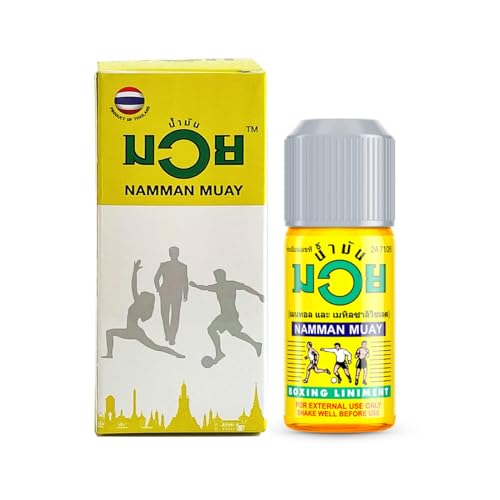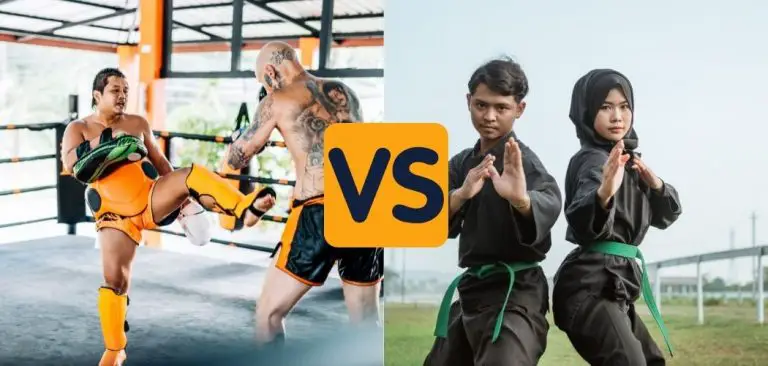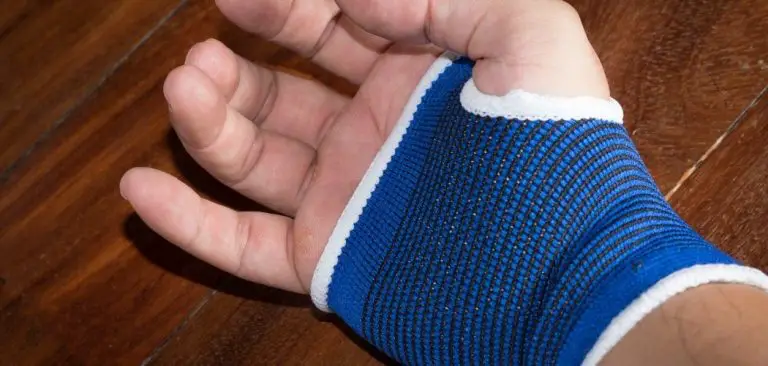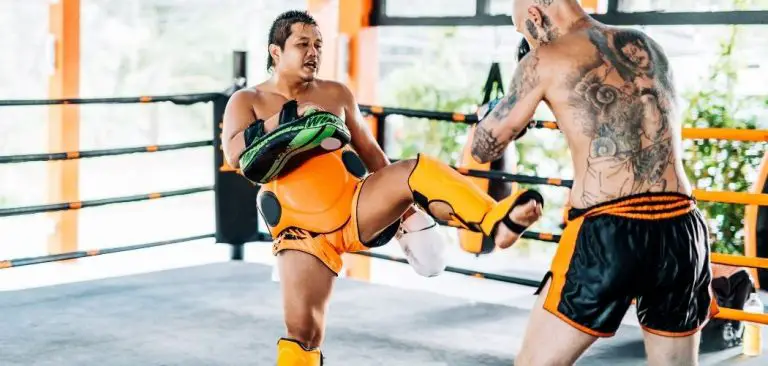Today we are looking at how long it takes to condition your shins for Muay Thai. Sounds painful, right? Right! If this is your first time hearing about shin conditioning, not to worry because we are going to look dive right into it, and by the end of this article you will have lots of new knowledge to share with fellow Muay Thai lovers!
So, how long does it take to condition your shins for Muay Thai? Like everything, it can depend on the person. We all have been hearing that “everyone is different and unique” since we were in Kindergarten, and I am bringing that idea to the front of your mind again today because this still applies when it comes to conditioning your shins.
If this answer is too vague for you, typically it takes about 2 to 3 months to condition your shins for Muay Thai, (I know what you are thinking, and yes that is a long time!) Let’s take a closer look…
Table of Contents
Why Condition your Shins for Muay Thai?
You may be wondering why one would go through 2 or 3 months of pain to condition your shins, most of us want to avoid pain, not sign up for it, but there is a method behind this madness! 
If you are any bit familiar with Muay Thai, or any martial art, you probably know that there is a risk of injury. Shins have a big part to play in Muay Thai fights, they are used a lot to block kicks from opponents and can be prone to injury if they are not conditioned properly.
Our bodies are amazing, so much so that we probably don’t even understand its full capability (well, I defiantly don’t). Muay Thai fighters condition their shins because the body can adapt to injuries. Let me break that down for you a little – if your body gets injured, it will heal.
Your body will become stronger each time it heals, and it will become harder for your body to sustain the same injury over and over again. This is why shin conditioning is so repetitive, so eventually, the shins will become so strong that they no longer suffer injury. Cool, right!?
Pros and Cons of Shin Conditioning
There are advantages and disadvantages to everything, and this does not exclude shin conditioning, lets have a look at the benefits first:
- Strong Muscles: Do you ever look at someone with big, strong muscles, and wish you had them too? Or maybe you are the person people look up to in the gym, if so, I bet muscle conditioning is or at least was part of your workout plan. Like we mentioned above, shin conditioning allows your body to become stronger, and less inclined to become injured over time. The calcium deposits in your body will help your muscles to repair, heal, and become stronger. (Yup, that’s right, you will be just like Bruce Lee in no time!)
- Improved Form: Another saying that most of us have been probably hearing since Kindergarten is that “practice makes perfect.” Seeing as shin conditioning is such a repetitive process, you are going to improve your form without even meaning or setting put to (nice, right?)
- Goodbye Sensitive Nerves: To condition your shins, they need to go through heavy impact, and your nerve endings do not like this (I mean, who would?) When this happens, the nerve endings send a signal to your brain, this signal is pain. By repeating the skin conditioning process, your nerve endings get used to these signals and react less to them each time they occur. Before you know it, you will, thankfully, be feeling less pain.
- Faster in the Ring: Speed is a very important part of Muay Thai. The fighter needs to be able to react fast to attack and defend well. Often, a fighter’s reaction time can be slow due to a fear of pain. If your shins are conditioned well, there will be less pain, and as a result, the fighter’s fear of pain will be lower. The shins will be less sensitive, the form will be improved, and the fighter will be faster in general, which is good news for the fighter, maybe not for their opponent.
So, now that you know all the benefits of shin conditioning, what’s stopping you from getting started? Oh, you’re wondering what the disadvantages are? Sure, we can have a look at these too:
- Time Consuming: If you remember the very start of this article, I mentioned that everyone is different in terms of the time it takes to condition their shins, but typically takes 2-3 months. For some people (the lucky ones), it may only take 2 months, but for the not so lucky ones, it may take double that. It is worth it in the end if you intend to fight in the ring, but you need to be fully committed, and ready to allocate a lot of time to it. Who knows, maybe in the future someone might develop an app for shin conditioning (one can dream, right?)
- Painful at the Beginning: Yup, you guessed it, it is painful at the start. You need to make sure you are doing it properly (don’t worry, we will get to that) so you can avoid walking around with blue and black shins. Your body needs to get used to the pain, and healing from it. Once it has done that, you will be happy to know that you can eventually expect to feel less pain.
What Part of the Shin to Kick With?
Kicking with the shins may look easy, but it is important to know what you are doing before you start, or you might end up with some nasty bruises! The shin bone is a very sensitive part of the body because there is not much muscle or fat around it, so any direct blow to the shin cannot be absorbed. 
If you want to avoid injuries and pain (of course you do), then you should connect with the front-outer shin muscles, to get technical – the tibialis anterior and extensor digitorum. This will let you deliver a powerful, but safe kick. Overall, well-conditioned shins will give a stronger attack and a tougher defense.
How to Condition your Shins?
It is very important that you know how to condition your shins correctly, remember that you want to condition your shins to avoid long term injury and make them strong, and there are a few different things you can do to achieve this. Here is some good way to condition your shins correctly (take notes)!
- Use Heavy Bags: Heavy bag workouts are a great way to condition your shins for Muay Thai. They are extremely useful for solo workouts if you don’t have a partner to train with. You need to make sure that the bag is the correct weight, a good way to indicate this is to make sure the bag is roughly the same weight as your opponent. It should also be flexible enough to move from the impact of your powerful kicks. The number of times you kick the heavy bag may depend on your training plan, but generally, it is recommended to do at least one hundred rounds on the heavy bag on the days you are training (my advice to you would be to learn how to love heavy bag workouts!)
- Sparring: This is another good way of getting those strong, conditioned shins for Muay Thai that you are after. It is important to get the use of feeling bone on bone, which can be uncomfortable at first for sure. Ensure to use each sparring session to focus on improving your reaction time, as well as your form. Another good tip to condition your shins for Muay Thai is to perform Roundhouse kicks, as well as alternating your striking legs. Remember – you need to both shins as conditioned as each other, often people concentrate too much on their stronger leg and not enough on the weaker leg.
- Food & Nutrition (my favorite): We all love to eat, right? But you need to ask yourself are you eating right for your training. Seeing as conditioning your shins for Muay Thai is all about muscle strength and bone density, your body must be getting the right diet. Carbs and protein are two very important food groups that need to be consumed a lot for your shins to be conditioned well… so eat up!
Conclusion
And that is it, folks! Hopefully, you now have a better understanding of how long it takes to condition your shins for Muay Thai, and what tips and tricks to use. Remember that recovery is key and don’t go too hard on yourself, with everything patience is key, and before you know it your shins will be conditioned the correct amount. If you have a tough day along the way, just think back to Kindergarten, “practice makes perfect.”
If you enjoyed this article you should check my Ultimate Guide, and pick up some tips and tricks that you didn’t know!
Last Updated on May 21, 2022 by Deni













